Why Park City School District trust is so important
There is an interesting debate going on in our comments about the public’s ability to direct the school district in its needs for expansion.
Some say that the public will always find fault with something in every plan. Therefore, that’s why we elect a school board to make decisions. If you don’t like the board’s decisions, then vote new people in.
Other people say that public is crucial to the process to ensure that a proper outcome occurs.
We think this highlights the need for trust in the process.
Take for example adding a 5/6 school at Ecker Hill (that has been proposed by the district). You may not like the traffic impacts. You may not like the added transitions between schools (which has proven to hurt education). You may not like 5th graders at the same school at 8th graders.
However, if you trust the school district and their process, you’ll probably come to the conclusion that while there are a number of issues, putting a 5/6 school at Ecker is probably the best out of a number of imperfect choices.
However, if you don’t trust them, you nitpick the issues and conclude that they don’t have a clue.
Without trust in the district, that nitpicking will likely make any bond effort the district puts forward hard to pass.
We think the school board and district are making strides toward gaining trust. Whether they can move the needle enough in the next year or two will likely determine the course of the district for the next decade.
Are local businesses playing by the rules?
A few weeks ago we received an email from a community member. They are concerned with the water usage of the Park City Nursery. Specifically, the author is worried about whether the nursery is taking more than their fair share from the river and whether they are using water efficiently.
We reached out to Park City Nursery via phone but did not hear back.
So, here is the community member’s article:
The Park Record recently posted an article in the July 8-11 edition regarding the Park City Nursery new ownership and their goals for the future. It was reassuring to note that the new ownership “imagines Parkites from all over town visiting for an afternoon picnic or cozying up with a book next to the stream that runs through the property.” While this is an inclusive and provocative invitation, a greater concern is being overlooked.
It appears that the nursery continues to draw water directly from the stream without a measuring device that is required under existing water rights which has likely led to diversion of water in excess of the maximum allowed amount. Reference the following link for more detailed protest information; https://waterrights.utah.gov/docImport/0589/05896652.pdf
In addition to the nursery, this stream also provides water down stream to the Silver Willow Pond and Silver Willow Lake.
It has been noted by multiple residents that the nursery continues to use what appears to be extremely inefficient rain bird style watering devices that virtually run all day long. Not having the water flow measured, coupled with using inefficient watering practices, appear to be contributing to the stream below the Nursery being reduced to a trickle. This stream and the Silver Willow Pond and Silver Willow Lake are extensively enjoyed and utilized by the approximately 1,500 residents in the Silver Springs Area. The reduced water flow could affect the biologic health of the Pond and the Lake, not to mention the enjoyment of the stream for all the homeowners that live adjacent to the stream.
Requests to the nursery owners to install a measuring device have been made and no obvious action has reflected any attempt to monitor or measure the volume of nursery water usage. Perhaps this request has fallen on deaf ears. We hope not. An onsite inspection has been requested to verify. We, too, want to embrace our hometown nursery and give them an opportunity to set a positive example by efficiently using, measuring and not exceeding the water it has allocated for their use, and thus being a good neighbor to all who utilize and enjoy this wonderful limited resource.
Water is one of the most important issues facing the West. As residents of Park City, you either likely already care about water or you will. We’ve heard from various water service districts that they will further cut back next year on days watering can take place at your residence.
If a business can take water without accountability from the river it doesn’t seem fair (or perhaps legal).
We hope to hear from Park City Nursery soon on their commitment to protecting our most valuable resource.
If we hear from them, we’ll let you know.
What we hope to see from the Park City School District related to School Expansion
With a 4-1 margin earlier this month, the Park City School Board decided to not bond or raise taxes for school expansion until at least 2018.
It was likely a smart move. A bond survey from a few months ago showed luke-warm support for a $70-$130 million dollar bond. The school board is now embarking on a process they call a “listening tour” to better understand how the community feels.
At the Park Rag, we feel it’s important for them to do more than that.
It’s true we can be skeptics. However, if the school district wins people like us over, they are bound to be much closer to passing a bond.
So, what will it take for the school board to win us over?
Before the 2015 bond, we sat in on many meetings of the district’s Master Planning Committee meeting. We went to public meetings where the stated objective was to get public input. We went to the school board vote, where the board decided to move forward with the bond. We talked to school board members. We talked to the bond opposition.
For the most recent bond-discussions we watched videos of meeting posted online. We went to a few public meetings. We spent more time talking to people behind the scenes. We visited with people on the committees. We visited with local government personnel. We tried to get opinions from other people who were there.
Our takeaway from following this process for 3 years is that almost everything about the school district’s bond process must change. It didn’t work in 2015. It didn’t work in 2017. What needs to be done for a successful bond in 2019?
1. It’s a matter of trust.
The funny thing about trust is that it generally can’t be manufactured. It must be organically earned. There are a lot of people out there who mistrust the school district. Some of that comes from the past bond efforts. Some of that comes from broken promises. Some of that comes from personal encounters people have had with the district. Some of that comes from employees of the district who tell their friends “how it really is.” We believe the district thought some of that trust would be earned through the increase in teacher salaries. We believe that falls under the “manufactured trust” line of reasoning. We’re sure teachers are happy to be getting an increase (who doesn’t like money).However, does that really increase trust with the district?
In reality, trust is earned and lost at every moment. Each time a teacher meets with an Administrator, trust is gained or lost. Each time a board member or Administrator is on the radio, trust is gained or lost. During every meeting with the public, trust is gained or lost.It really comes down to a culture of trust, which emanates from the School Board and from the Superintendent. Then trust flows down the chain. When we hear that the Park City School Board is “going on a listening tour” and intends to show the public that they are listening, we cringe a tiny bit. We would rather them say they are going on a listening tour and will be listening to the public. There’s a difference between really listening and trying to show someone you are listening (whether you are or aren’t). When we see people take time to come to the school board and provide public comment, and a school board member won’t even look at the person, it causes us to lose trust. We think the board is making strides but it’s a marathon of trust earned every day.
The Superintendent has a different set of issues. She is not only responsible for herself but for the culture of the entire organization. That culture needs to be one of trust. Trust between teachers and principals. Trust between the average employee working in the district and administration. Trust that decisions are made in good-faith and not because of grudges or personal whims. We aren’t naive enough to think that everyone is going to be happy in a school district, but we’d like to think that generally there can be a level of trust. That trust may or may not be there today (depends on who you ask), but it is important. Without a strong culture of trust on both the board and the administration, it becomes very easy to dismiss even the positive strides that the organization is making. From top to bottom, the interactions (AND NOT THE MESSAGE) has to be reality.We receive a number of calls from school district personnel who provide a less-than-rosey view of things. They question exactly what is going on. If we are talking trust, these are the people that the disitrict needs to win over on a day-by-day basis.
2. The public needs a full explanation of exactly why we are doing what we are doing with regard to school expansion.
In any school expansion or modification, a number of pieces are included. When the public questions why various items are included in a plan, we often hear that the “so-and-so committee” decided on this … or that there was a public meeting where there was support for an idea. Yet, there is rarely an explanation of why. If there is one, it is often superficial. For example, in some of the later design concepts for the redesigned high school there was a CTE/PC CAPS area. Why? Didn’t we just change the library to make it more PC CAPS friendly?We’re sure there was a good reason but it left some public feeling that the district was still trying to get their pet PC CAPS building that was denied years ago.If there was a document explaining why that PC CAPS area (and every other piece) is needed, then people can decide whether they are willing to fund it. Otherwise, many view it as just another pet project and it clouds their judgement of the whole concept.
We’re sure there are school district people reading this saying, “Gosh Darn you Park Rag (or likely worse) . We are educators and we know what the children need. ” In some ways, those people are right. However, often the trust isn’t there (see #1) to give our school administrators the benefit of the doubt. Thus, we are now in the Shark Tank phase of school funding. The School District needs investors to do what they want. They better have a good plan. If not, they won’t get the funding. We’d suggest they start with a pretty detailed business plan.
3. Committees and meetings need to be less controlled.
During the 2015 bond process, we were surprised by how controlled some of the public meetings were by school district officials. For instance there were three public meetings where citizens would work to decide how they thought the school district should redesign campuses and expand. However, such heavy constraints were placed upon the citizens that five of six groups (formed from the citizens during a meeting) came up with essentially the same idea of how to redesign the district. Likewise, members of the administration and school board were divided out into each group, which tended to push all the groups in the direction desired. During this year’s school planning discussions we heard from various people on the 5/6 school redesign committee that initial meetings were a little too “out of the box.” The district then assigned seats during the next meeting to “to spread out the trouble makers” according to our sources. We acknowledge that there is a fine line between letting a meeting get out of control and completely controlling that meeting. However, our fear is that our school district sometimes holds meetings with certain outcomes in mind. They then shape meetings to ensure they get those outcomes. Finally they say that a committee or the public made decisions, when it really doesn’t represent free thought. It’s not a new tactic and some would likely argue that it’s a traditional strategy. However, if that’s the case, they are only fooling themselves. The public isn’t going to buy it.
4. The public needs to know everything that was looked at and why certain ideas weren’t chosen. These decisions need to be well documented.
A common question asked about the 5/6 school is whether the school district looked at putting K-6 in every elementary school. The standard answer is that there isn’t room, so the elementary schools would need expansion. However, the typical outsider wants to know why that’s a big deal. Couldn’t the district spend $2 million per school and add a number classrooms to each school? Wouldn’t that be less money than a 5/6 school? Are there other benefits of a 5/6 school? The district may have valid reasons but unless they are expressed in an explanation of both why certain ideas were chosen and other ideas were declined, we don’t know why decisions were made. That leaves the public feeling like decisions were arbitrary. We would welcome a discussion on whether a 5/6 school or expanding elementary schools were the proper course of action… but if the school district doesn’t explain their rationale for a new 5/6 it all seems arbitrary. It comes back to trust. Without it, we need to know why.
5. The architecture firm VCBO needs to shelved for the next round of discussions.
In almost every stage of Park City’s school expansion talks over the past few years, the architecture firm VCBO has been there. They were in many master planning meetings. They hosted public workshops. In many ways they are the face of Park City school expansion. They are constantly present. The upside of this is that they are familiar with Park City. The downside is that the 2017 plan looked remarkably similar to the 2015 plan. There was little out of the box thinking. We believe we need an architect who will achieve a good value through balancing wants versus cost. We need someone who is strong and will ensure plans balance both student and teacher needs, and not make our schools into a University campus where teachers have no primary room to conduct classes from.
6. The community does generally understand. They just understand differently.
We’re really tired of hearing that the community “just doesn’t understand.” After the 2015 bond failure, much of the talk was that those opposed to the bond didn’t understand it. During the most recent bond discussion a board member inferred we couldn’t trust a survey on a potential bond because some comments talked about a field house and there was no field house proposed in this bond. The truth is that few people understand the details on something as complicated as the bond. That includes board members, school administration, or the voters.As an example, we would point out the traffic impacts of adding a 5/6 school at Ecker Hill. In 2015, a question was asked about how traffic would be handled if a 5/6 was placed at Ecker and the answer was, “it’s Summit County’s issue to figure out.” That board (it had some different members) either didn’t understand the issue or were trying to push impacts on someone else to solve the problem. If we revisit that same question, we would love anyone from the school district to tell us the specific traffic impact to Ecker at peak times, along Kilby Rd, given the new Whole Foods, UDOT’s coming roundabouts at I-80, the coming Park and Ride at the rest stop, and the new 100 units going up by Quarry Village. Specifically, what will the maximum wait times be, how far will traffic back up, and what will the impact be to buses. Having no answer is OK but that leaves you going with your logic and your gut feel. That’s what many of us in the community are forced to do. We think that’s what most people do, including the school board.
As for chastising bond survey takers for providing comments that contained inaccuracies about things that weren’t even being proposed this time around (like a field house), we get where the board member is coming from. However, we also shouldn’t forget that with the 2015 Bond, the School Board was presented with recommendations from Dr. Conley and the Master Planning Committee. The school board chose to go with their proposal and not the Superintendent’s or the committee who had been meeting for months. So, the board may have to forgive the public for telling them everything they don’t want in a bond, just in case the school board got a wild hair and said, “let’s go for the $130 million dollar bond and why don’t we include a field house in there,” even though that hadn’t been publicly discussed.
So, where does that leave us?
Given the district’s past track record, we’d assume they are focusing their efforts (behind the scenes) on planning for a school bond as soon as they can.
If they asked our advice, we’d say stop. Don’t think about the next bond. We believe the district needs to start over on their assessment of needs — from scratch.
Given where we are, they need to build a case based on logic that is documented. If our schools are overcrowded, then close them. Don’t allow additional outside of district students in (Jeremy Ranch is currently the only school closed… as far as we know). Don’t tell us we need trailers at Trailside and Parley’s but then have them as “Open Schools.” There is likely a reason but it doesn’t make sense to the public.
Don’t tell us that Treasure Mountain is dangerous (from lead or earthquakes or the water fountains or crowded hallways) and then keep it operating. If it’s dangerous, shut it down. If it’s not, then don’t talk about it. If there are other reasons for shutting it down, like it costs $2 million a year to heat, or we need a $25 million boiler, or students are not getting a good education because the building is crappy then make that case… but don’t use fear to try and persuade the public.
Build the most logical case ever, without spinning. Build the most logical case ever, based on what people KNOW. Build the most logical case ever, without manipulating.
Make the case so compelling that few (if any) question it. Do that and the public will gladly hand over their money. If that can’t be done then, at this point, the school district probably shouldn’t get the money.
If they can do that, and continue building trust, they’ll have our full support — and likely many others’ support too.
Can we all just chill out a bit and be human?
Yeah, we know the performance wasn’t great. It happens.
PSA: Our waste collection bills are due
Last year Summit County decided to shift part of the cost of collecting garbage onto a separate bill from Republic Services. You may have received a bill earlier this year for $36. That was technically for 2016. Now, you are receiving a bill for 2017.
Our advice is paying that sooner rather than later. We know a number of people who feel this was a closet-tax increase. However, that debate has passed. If you don’t pay it, you will receive penalties on the amount.
It appears the bill is due August 4th, even though you probably received the bill on the 24th or 25th. So, the due date is fast approaching.
You can pay online using a credit card by going here:
Please note, it appears that while your invoice has hyphens in the account number, the website won’t accept them. So, just leave them out, when you pay online.
You of course can also send in a check if you prefer.
Will we need Dozier Field in 10 years? What does that mean for School Expansion?
Over the past few years, Park City has hotly debated what form school expansion should take in our community. The 2015 school bond was somewhat derailed by questions about athletic facilities. Where should the football field go? Should we have a field house? If we move Dozier field, then we can expand the high school west but if not, then we are limited in the directions we can expand. Those are just some of the discussions that occurred.
Amid all the discussions surrounding Park City school expansion, there is one question we haven’t heard asked. “Will we need Dozier field at all in 10 years?”
If you have 45 minutes this weekend, we’d recommend you listen to a radio segment called Is it Time to Sack Football from WAMU radio. The segment features Cindy Feasel, who’s husband played in the NFL and died from complications related to chronic traumatic encephalopathy (CTE), which appears to be caused by repeated blows to the head. It also features Dr. Bennet Omalu, who was the doctor who discovered CTE and was played in the movie Concussion by Will Smith.
While the issue of concussions and their long term effects in the NFL has been discussed greatly, those concerns have been largely dismissed by many as the price of fortune and fame. What hasn’t been discussed as much is the impact of head injuries on high school students.
The program makes a number of points. For every concussion in the NFL, there are 800 concussions in high school. This is due both to the larger number of children playing football and that high school football can be less safe (i.e. unrestricted practice times, older equipment, no or less qualified trainers, etc.). So there is more prevalence of head injuries in high school football.
Second, Dr. Omalu sites a study from Sweden where they looked at 40 million children over 42 years. They found that children who had ONE or more concussions were four times more likely to commit suicide than the general population.
Third, there is no such thing as a safe helmet. They pointed out that helmets are used to help prevent skull fractures, which can be life threatening. However, even very advanced helmets won’t prevent many concussions.
Fourth, it’s a public issue. Because our publicly funded schools provide football to children, and football has been linked to brain injuries, there may come a time when school can’t morally justify offering sports which have been shown to harm children.
Please don’t take this as a call from the Park Rag that Park City should no longer offer football. It’s much more complicated than that. However, we do believe that there is a strong possibility that in ten years Park City High School may no longer offer football. This could be from liability issues. It could be legislated by the state. Perhaps even our new Assistant Superintendent of Mental Health may look at the research and decide it’s too much of a risk.
This brings us back to Dozier field. Our current Master Planning process is trying to determine how we need to expand our schools to accommodate the next 20-30 years of students. Imagine how that process changes if there is no football. One of the main reasons for having Dozier Field would be gone. Sure, other sports utilize the field, but do they really need a stadium? Sure graduation uses the stadium (barring a freak summer snow storm), but that is one day a year.
It seems like a long term plan that includes the possibility that Dozier will be dozed opens up some interesting alternatives. It may enable us to defer some decisions until we really understand what long term growth patterns will look like. It might provide space for the Uber-Fieldhouse desired by some. It may provide space for additional classrooms or a new type of educational space altogether.
The future is always unclear but we believe that any master planning process should at least factor in certain possibility that we won’t need Dozier anymore. Is Dozier used in a number of different ways? Yes. The question becomes, if football goes away, is the stadium the best use of space for our students? Maybe or maybe not.
Again, we are not calling for the end of football in Park City. We are only asking to discuss the possibility and what that may mean for our school needs. There may come a time when kids playing tackle football seems as crazy as kids smoking. Maybe high school football will switch to flag football. Will we want or needs a stadium for that? Who knows… but it’s worth discussing.
Since we are trying to predict the next twenty year of school needs, we should likely factor the impact of brain injuries on our students and what that means for the future of football in Park City. That discussion should heavily influence our master planning process as we look at how to best serve the needs of our children.
A disappointing start for the Summit County E-Bike Share
The difference between yesterday and today was great. Yesterday was full of hope. Today was full of reality. So, it was for the Summit County Bike share.
Yesterday we had the opportunity to ride with members of the community to celebrate the launch of Park City and Summit county’s joint electric bike program. We rode to the white barn. There the mayor gave an impassioned speech about watching geese fly overhead and hearing the sound of bats cracking when riding his e-bike. Other city and county figures spoke about how e-bikes will fit into the broader transportation system. Finally, many of them spoke about how this was the country’s first all electric bike share program, which brought broad cheers from the crowd.
Maybe we all should have paused to let that final comment sink in.
Today my wife decided to ride a Summit County E-Bike from the Kimball Junction to Prospector to pick up her other bike. I rode along on my Pedego e-bike. The ride started off great, as we pulled up to the bike rack and unlocked a bike. The bike racks are gorgeous and its almost like magic when you key the bike’s number into your phone and it unlocks the bike.
Then about a mile and a half into the ride, my wife hit a bump on the trail and the bike turned off. It wouldn’t turn back on. The bike became an 80 pound paperweight sitting on the paved trail next to Highway 224. What do you do? We tried everything we could to get the bike running again and we couldn’t get it rebooted. Then we looked for a phone number. There’s no phone number on the bike for support. We then opened the app and the contact us section of the app looks like it would email someone in Quebec. We tried that and still haven’t heard back. I called the Summit County Transportation Planner but she wasn’t available. Just as I was about to call the bike maker (Bewegen) in Quebec, my wife found a phone number on the bottom of the Summit County Bike Share website.
She called the number and the person asked if she could just ride the bike to the nearest bike rack. That would be the Canyons and it was about a mile and a half away. Normally that wouldn’t be a problem but the bike weighs something like 80 pounds and it’s fixed gear. She couldn’t do that. The person then asked if she could just lock it up where she was and walk. Again, we could have walked but you don’t rent an e-bike to walk it around the Basin. So, I sucked it up and rode the bike uphill for about a mile and a half, while she rode my bike. It’s the hardest physical exertion I have done in twenty years. I don’t know when my knees will forgive me.
Once we got to the Canyons, we actually ran into a Bewegen support person coming out of 7-11. She was very kind and gave my wife another bike to use. She asked if we had checked whether the bike was out of power (note to other riders: you need to do this before renting a bike… we’ll talk about that in another post). The broken bike magically turned on once it was back in the rack and we saw that the bike still had 3 hours of battery, so that wasn’t it. She also told us just to lock up the bike if it breaks down again and they will find it. You’re still walking, though.
If that was the end of the story, it would have been a mild inconvenience… but it continues…
Our plan was to drop off my Pedego for a tune-up at the Pedego shop near Sammy’s Bistro. My wife would pick up her bike and I would rent a Summit County E-bike and ride it back to Kimball Junction. Once we got to Prospector my wife and I parted ways. I went to Pedego and she got her bike. We met back up at the Prospector Square E-bike station, where we met a random person named Piper. It seems Piper’s Summit County E-bike had broken down just like my wife’s. She had walked her bike to the station and was trying to get another one. However, when she used her app to try and get a bike all it would say is “Alert: OK”. She had tried every bike in the rack. You got the feeling she had been there a long time. I then tried and all I got on the app was message saying “Alert: OK”. My wife, who successfully used the app 2 hours before got the same message.
The only bike we could use was one that someone had not pushed fully into the bike rack. We decided we couldn’t be jerks and pushed the bike back into the rack so the lock would engage (note to other riders: make sure you hear a faint ding from the bike when you rack your bike back up… or your bike isn’t really returned). We didn’t want the anonymous rider to get charged $2 per half hour just because they hadn’t successfully docked the bike.
Piper then headed off to catch an Uber. We joked that maybe the Summit County E-bike share was secretly owned by Uber.
I went back to Pedego to beg for a loaner bike, which they nicely accommodated.
Since arriving home after spending nearly 4 hours on what should have taken an hour and a half…we communicated this info to the county, who said they would address this up with Bewegen. Bewgen is managing the service for the city and county.
However, the issue is that no one knows who Bewegen is. The brand and organization at risk and responsible here is Summit County. Their name is on it.
I’d say about 10 people stopped and tried to help us with the Summit County E-Bike that had broken. We have a great community. However, all those people heard that the bike didn’t work. If Piper, the woman we met at the Prospector Square bike station, is half as friendly to others as she was to us… she has a thousand friends who likely heard negative things about the bike.
The problem is, when negative things happen, it makes you question an organization’s ability to deliver. The county is contemplating a guaranteed ride home if you took the bus. After today I ask, would that guaranteed ride home be 4 hours later? I think about the Cine Dahle parcel that the county bought, and wants to put 600-1200 units of affordable housing. Before, I questioned the idea. Is it a good idea? Now I question whether they could execute on it, even if they wanted to.
If we were the city and county, we would have people at every e-bike station tomorrow and throughout the weekend to help users. We would quickly print up labels with the support phone number on them and affix them to every bike. We would have a couple of vans ready to take people to their destination if the e-bikes break down and the person calls support.
These issues will be fixed. Hardware and software usually are. However, it’s a good lesson that Summit County and Park City need to be on top of this. They need to own it. It’s great to tout that we have the first fully electric e-bike share program. However, it’s evident that there are some downsides to that. Summit County and Park City are now in the rolling laptop computer business, whether they know it yet or not.
When your bike breaks down on Highway 224 and Flying Sprocket can’t even help you, you are in a brave new world … whether you want to be or not.
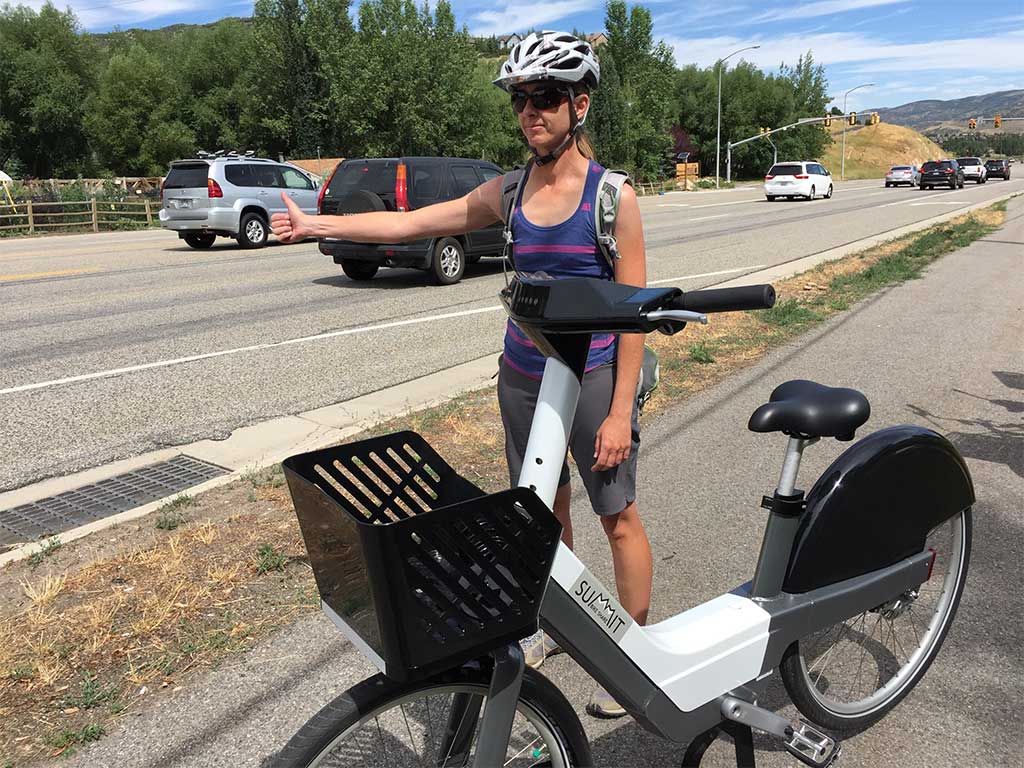
Are AirBNB, VRBO and other short-term rentals killing Park City?
There is a great article in Outside Magazine about how AirBNB and other VRBO services are killing the “last great American ski town.” No, they aren’t talking about Park City. They are talking about Crested Butte. However, the article might as well be talking about Park City. What are the problems? Traffic. No affordable housing. Fewer year-round residents. Increased home costs.
The articles theorizes that ski towns in the West are being decimated because people are buying homes to rent as STRs (short-term rentals). This drives up prices and makes everything from long-term rentals to home purchases less affordable. With that comes traffic and other issues.
The director of Colorado Association for Ski Towns says, that historically short term rentals “were mostly just excess inventory—someone had an extra room, they weren’t going to rent it out long-term anyway.” Now, she argues, “it’s reached such a point that people buy homes for the sole purpose of renting them.”
Is this just a Colorado thing? No. Ulrik Binzer, founder and CEO of Host Compliance, a San Francisco startup that helps municipalities track STR activity, says in the article, “I have friends who pitched me on the idea of buying a place in Park City and renting it out during Sundance, basically paying the mortgage for the whole year.”
We often hear that 2/3 of homes in Park City and 1/3 of homes in the Snyderville Basin are second homes. It makes sense that these folks want to help pay their (second) mortgage. Unfortunately the rental income also enables people to pay more for a home, thus driving up costs. For instance maybe you live in Chicago and love Park City. You might decide to buy a condo here. Let’s say you can afford a second mortgage payment of $2,600 a month. At today’s rates, you could buy a $550,000 condo (30 year mortgage). Now, what if you thought you could rent that property out for 6 days a month at $250 a night, thus making $1500 extra a month. Now you think you can afford to buy an $875,000 house (or condo). You think you can probably make even more during Sundance.
They are going to buy more. They are going to pay more than they would have. If hundreds or thousands of people have this mentality, the demand drives prices up. To be honest we’ve had those thoughts… should we buy a second condo in New Park and rent it via VRBO? Our friends have those thoughts as well. It’s much easier to justify if you tell yourself that the income help pay the $400 per square foot.
Where this hits hardest is workforce housing. We like that term better than affordable housing. Is a $500,000 condo affordable? What’s affordable? The article highlights the issues affecting workforce housing. “It’s always an issue, and this has just exacerbated it. Homes that used to be rented to the workforce, that offered year leases, are suddenly being pulled out from under them and put on the short-term market.” In Crested Butte, long term rentals shrank from 43 percent of the town’s free-market housing stock in 1997 to 24 percent in 2016. Locals are competing for fewer rental units.
So, what are ski towns doing about it? Much like Park City and the Snyderville Basin they are trying to increase supply. Much like our affordable housing initiative that will happen at Cline Dahle (by Jeremy Ranch elementary School), Crested Butte is creating income-restricted apartments. However, it’s difficult to help ensure there is enough affordable housing. As the Outdoor Magazine article states, a new hotel would be required to create a certain amount of affordable housing. However short-term rentals have no such requirement.
So, what do we do about it? If there was a good answer, it would be implemented everywhere. There isn’t. There are cities who try and limit short-term rentals by limiting rentals to 90 days total a year. STR owners often then let the house sit empty, except for the prime 90 days. This of course lowers tax revenues because visitors aren’t out on Main St (in our case) for the other 275 days spending money. Therefore, cities and counties are against it.
Other limitations are often floated but they get shot down by attorney’s and other property owners who depend on that income. For example a Crested Butte realtor says, “I’m not sure what the problem is. Crested Butte had spent money to bring more visitors but now we’re saying we don’t want them here. Limiting STRs is not going to lower the price in town. The town is going through the roof because people want to live here.”
Sound familiar?
Also, does this statement from the article’s author sound familiar? “I could also sense an inchoate fear that Crested Butte was in danger of losing what made it so desirable in the first place. Much of its last-great-ski-town aura comes less from its skiing than from its strong sense of identity (it was a working town long before there was a ski resort), its relative affordability (compared with, say, Aspen or Vail), and its quirky cast of local characters.” The author then talks about a local school teacher who says, “After a while, it wears on your community when your schoolteachers and folks like that can’t be a part of it. They should be the ones coaching and volunteering and showing up for free music. When you drive home for the night and don’t come back, it’s harder.”
If anything, it shows we’re not alone.
If you have a few minutes this weekend, we’d recommend reading the entire article. It highlights many of the issues we are dealing with today and the ideas that have been tried.
Here is what the current VRBO market looks like in Park City and the Snyderville Basin.
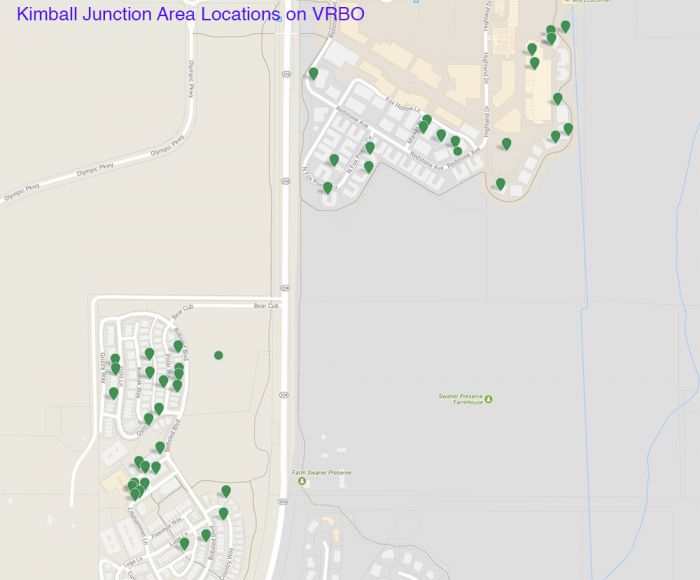
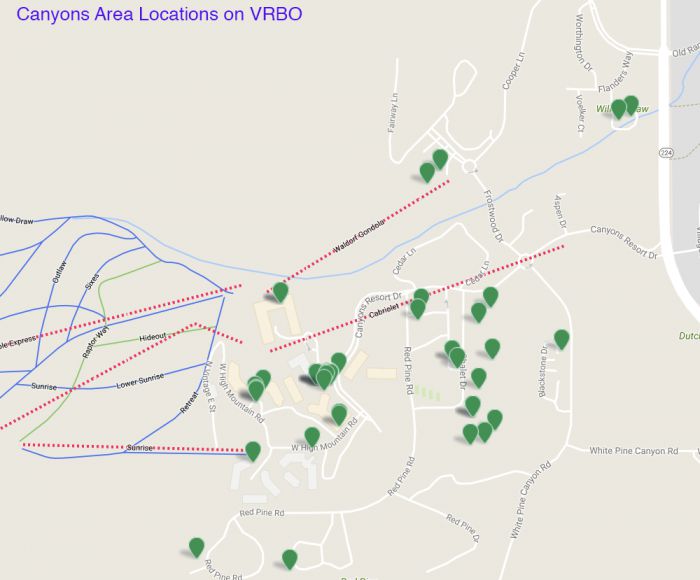
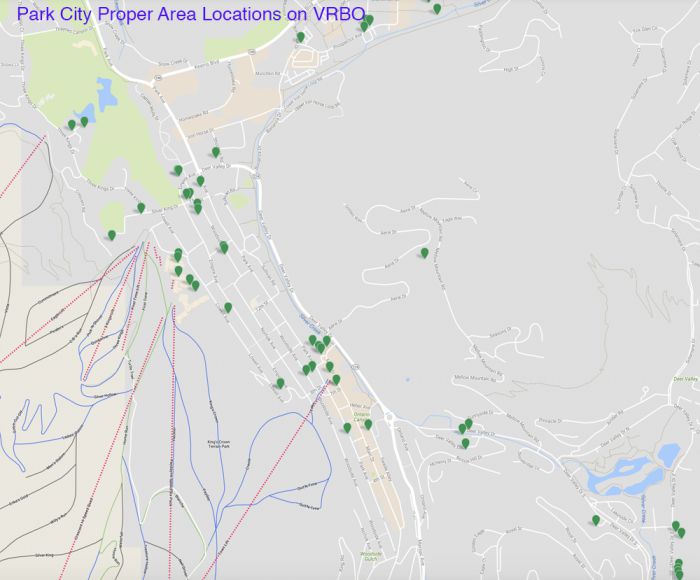
Thank you Park City Fire District
Just after 4PM this afternoon lightning struck the hill above Jeremy Ranch Elementary school. I received a call from my neighbor telling me that a large fire had started. He said it was about the size of 4 pickup trucks. As I raced home, which is about a quarter-mile from the fire, I thought of all the things I could lose: my dog, my house, my memories.
By the time I arrived home a few minutes later, the Park City Fire District was already on the scene. As the fire crested the ridge and headed toward homes in Jeremy Ranch, the firefighters worked diligently. The firefighters are still working, but as of now, no homes seem at risk.
I’m not sure that would have been the case without them.
Our local governments often receive a lot of complaints; however, I have been nothing but impressed with the Park City Fire District, Sheriff’s Department, and Park City Police Department. They have our backs…
And on an afternoon that was almost 90 degrees, when it hadn’t rained in weeks, and a fire is a 1/4 mile from your house… you are very thankful for these people.
So, thank you Park City Fire District for all you do.
Here are pictures from today’s fire:
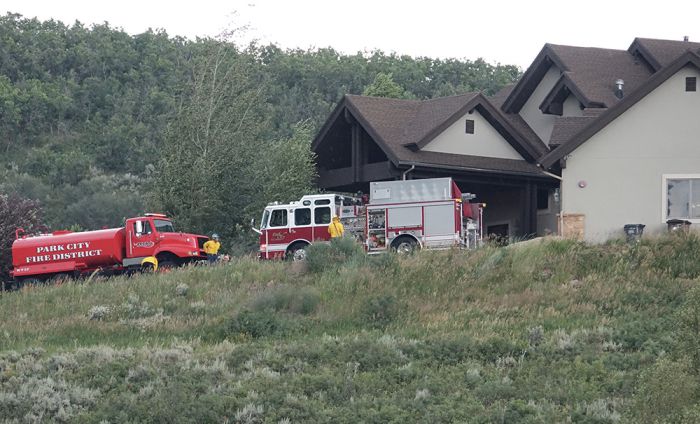


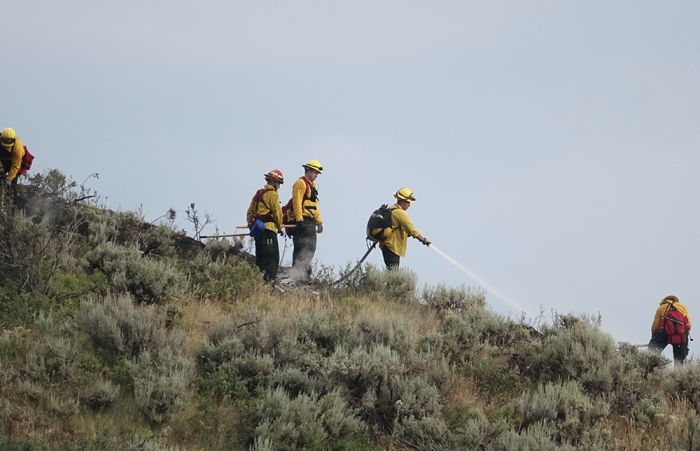
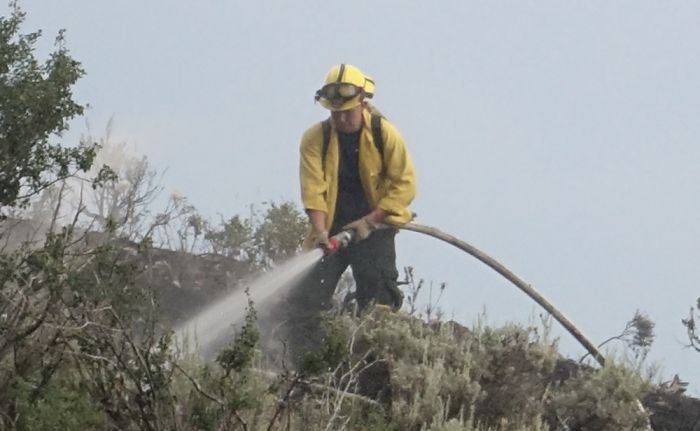

Did you enjoy Park City’s 4th of July Parade and and activities yesterday?
Marie Kondo specializes in helping people remove clutter from their lives. One of the questions she asks when helping people decide what to keep around is, “Does it spark joy in your life?” If not, you get rid of it.
We’ll assume like many Parkites, you attended Park City’s 4th of July parade on Tuesday. Did it spark joy in your life?
That may be a little bit extreme. The parade and associated festivities are SOMETHING TO DO. Unless you are Mayor Jack Thomas, at the center of attention, riding your bike down Main, it’s probably more of something to do than something that sparks joy (to be fair, Mayor Thomas probably doesn’t like it that much).
It’s a spectacle.
We gazed upon the throngs of people who crowded, sitting under a tent on the baseball diamond, to eat their BBQ. There couldn’t have been more than a few inches separating each person in 90 degree heat.
We watched as people walked across the Rugby field, oblivious, as the game was still going on.
We tried to swim upstream from City Park and head back towards Miner’s Park, through the tens of thousands of people heading down from the Parade.
Park City knows it’s broken, and they’ve tried for a few years to fix it (god bless their souls). But like traffic, it’s probably unfixable.
Friends of ours say they are going to Oakley’s Parade next year. However, that just seems like the locust mentality … where others have overrun our parade so we’ll go overrun somebody else’s. We can’t buy into that.
So, did the parade and related festivities bring you joy this year?
We hope so.


